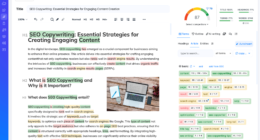Lead management software helps small businesses track and nurture potential customers through the sales process. Popular solutions like HubSpot, Pipedrive, and Zoho CRM offer essential features including contact organization, automated follow-ups, and performance analytics. These tools centralize lead data, streamline workflows, and provide actionable insights through customizable dashboards. With options ranging from free to premium plans, businesses can choose systems that match their budget and scaling needs. Understanding key features and implementation strategies guarantees ideal results.
Quick Overview
- HubSpot offers a free starter plan with marketing automation features, making it an ideal entry point for small businesses.
- Lead management software centralizes customer data, automates tasks, and provides analytics to improve sales efficiency and decision-making.
- Pipedrive’s user-friendly interface and high satisfaction rating (4.7/5) make it accessible for small business teams.
- Essential features include customizable web forms, automated lead import, efficient segmentation, and integration with existing business tools.
- Zoho CRM delivers cost-effective solutions with customizable workflows, making it suitable for small business budgets.
Benefits of Lead Management Tools for Small Businesses

While manual lead tracking methods may have sufficed in the past, today’s small businesses are discovering significant advantages by adopting specialized lead management software. These tools centralize all lead data in one accessible location while automating essential tasks that previously consumed valuable time. Advanced search capabilities help businesses quickly locate and update contact information in their database.
Key benefits include improved organization through automated lead capture from multiple sources, enhanced nurturing capabilities with personalized follow-ups, and increased team efficiency. The software categorizes leads based on specific criteria and enables quick assignment to team members, reducing the risk of missed opportunities. With integrated email tools, businesses can maintain consistent communication throughout the lead nurturing process.
Additionally, these systems provide valuable analytics that help businesses track conversion rates, identify effective lead sources, and optimize marketing strategies. By streamlining the entire lead management process, small businesses can focus more time on high-value sales activities while reducing costs and improving ROI.
Essential Features to Look for in Lead Management Software
When selecting lead management software for a small business, identifying the right combination of features becomes essential for long-term success.
Modern lead management solutions offer robust capabilities that streamline sales processes and enhance team productivity. Advanced security protocols protect sensitive customer data while ensuring compliant data handling. Tools like email automation capabilities have become essential for creating personalized customer experiences and improving engagement rates.
- Core Lead Handling Features
- Customizable web forms for data collection
- Automated lead import from multiple sources
- Efficient segmentation and tagging system
- Workflow Automation Tools
- Automated lead assignment
- Task creation and reminder systems
- Email automation for follow-ups
- Analytics and Integration Capabilities
- Customizable performance dashboards
- Detailed conversion tracking
- Integration with existing business tools
The most effective lead management platforms combine these essential features with user-friendly interfaces, ensuring small businesses can easily capture, organize, and nurture their leads through the sales pipeline.
Top Software Solutions for Small Business Lead Management

Building on the understanding of key features, small businesses can now explore several leading software solutions that excel in lead management. The market offers diverse options tailored to different business needs and budgets.
Top contenders include Vtiger, which provides extensive CRM features with visual pipeline management, and Pipedrive, known for its user-friendly interface and high user satisfaction ratings (4.7/5 on G2). These solutions support both inbound and outbound lead generation strategies for comprehensive prospect acquisition.
HubSpot stands out with its free plan and robust marketing automation capabilities, while Salesforce delivers powerful AI-driven insights for growing businesses. For budget-conscious companies, Zoho CRM offers customizable workflows at competitive prices. Modern solutions enhance efficiency through automated ticketing systems that streamline customer support operations.
Most solutions provide essential features like:
- Visual pipeline management
- Multi-channel lead tracking
- Email automation
- Business tool integration
- Mobile accessibility
Pricing typically ranges from free plans to $37/month per user, with annual billing discounts available.
Getting Started: Implementation and Integration Steps
Once a small business selects their lead management software, successful implementation requires careful planning and execution. A systematic approach guarantees smooth integration while minimizing disruptions to daily operations. The key is breaking down the process into manageable phases that align with business goals and team capabilities. CRM integration enables seamless data flow between marketing and sales platforms, ensuring unified lead tracking across systems. Popular platforms like Salesforce customization offer flexible solutions to match specific business needs.
- Begin by defining clear objectives and requirements, including specific KPIs to measure success, budget parameters, and implementation timeline.
- Prepare the organization by cleaning existing data, mapping out workflows, and training staff on new procedures before the actual software deployment.
- Execute a phased rollout starting with thorough testing, running a pilot program with a small team, and gradually expanding usage while monitoring performance metrics and gathering user feedback.
These structured steps help businesses avoid common implementation pitfalls while maximizing the software’s potential benefits.
Maximizing Sales Performance With Lead Management Systems

A properly implemented lead management system sets the foundation for maximizing sales performance through data-driven decision making and automated workflows.
Real-time insights from comprehensive analytics dashboards enable businesses to make rapid adjustments to their sales strategies.
By utilizing automated scoring and grading systems, businesses can prioritize leads based on their potential value and engagement levels.
Automated lead scoring enables smarter prioritization, helping teams focus resources on prospects most likely to convert into customers.
Email automation tools like ActiveCampaign enable businesses to create sophisticated lead nurturing sequences that enhance conversion rates.
Key performance optimization strategies include:
- Integration of predictive lead scoring using AI algorithms
- Implementation of personalized nurturing workflows across multiple channels
- Regular alignment of sales and marketing teams through shared criteria
- Use of progressive profiling to gather valuable lead information
To measure success, businesses should track essential metrics such as:
- Conversion rates at each funnel stage
- Average lead response times
- Lead velocity rate
- Customer acquisition costs
- ROI for different lead generation channels
These metrics help identify areas for improvement and guide strategic decisions.
Understanding Lead Data Analytics and Reporting
While successful lead management relies on many factors, the ability to analyze and interpret lead data stands as a cornerstone of informed decision-making. Modern businesses leverage analytics tools and reporting features to transform raw data into actionable insights, driving smarter strategic choices and improved sales outcomes. The critical thinking involved in evaluating lead data helps businesses rigorously assess their sales strategies and make necessary adjustments. Event tracking capabilities through platforms like Mixpanel allow businesses to monitor specific user interactions and better understand customer behavior patterns.
- Data visualization platforms like Google Analytics, Power BI, and Tableau enable businesses to track essential KPIs, including lead conversion rates and customer acquisition costs.
- Automated reporting systems deliver real-time dashboards and scheduled reports, ensuring stakeholders stay informed about lead performance metrics.
- Advanced analytics techniques, such as lead scoring and predictive modeling, help businesses identify high-potential prospects and optimize their sales processes.
These analytical capabilities empower small businesses to make data-driven decisions, ultimately leading to increased efficiency and higher conversion rates.
Frequently Asked Questions
How Long Does It Typically Take to Train Staff on New Software?
Training staff on new software typically takes between 1-6 months, depending on several key factors.
The average employee receives about 55 hours of training annually, though 33% get less than an hour for new software implementation.
Training duration varies based on:
- Software complexity
- Number of employees
- Company size and locations
- Prior system familiarity
- Training method (classroom vs. online)
For ideal results, organizations should allocate dedicated learning time and use personalized training approaches.
What Happens to Existing Lead Data When Switching Between Different Platforms?
Just like moving treasured belongings to a new home, existing lead data undergoes a three-step migration process.
First, data is extracted from the old platform through specialized tools or exports.
Next, the information is transformed to match the new system’s structure, often including cleaning and deduplication.
Finally, the data is loaded into the new platform with thorough validation checks.
This process guarantees valuable lead information remains intact and usable.
Are There Industry-Specific Lead Management Solutions for Niche Businesses?
Yes, industry-specific lead management solutions exist for various niches.
For example, Salesflare serves small B2B businesses, while Keap caters to small businesses with specialized automation needs.
Healthcare companies can utilize solutions optimized for SEO leads, and real estate firms benefit from platforms like Freshsales with AI-powered workflows.
These specialized tools offer customized fields, industry-specific integrations, and targeted communication features that align with particular sector requirements.
Can Lead Management Software Work Effectively Without Internet Connectivity?
Like a lighthouse guiding ships through dark waters, modern lead management software can indeed function effectively without internet connectivity.
Most solutions offer robust offline capabilities, automatically synchronizing data when connections resume. Sales teams can continue creating leads, updating records, and logging activities even in remote locations.
While offline modes may have limited functionality compared to online versions, core features remain accessible, ensuring uninterrupted workflow and data capture in the field.
How Often Should Businesses Update or Upgrade Their Lead Management Software?
Businesses should update their lead management software weekly for routine maintenance and data quality checks.
Major upgrades should be evaluated quarterly to assess new features and functionality needs.
Annual thorough reviews are essential to guarantee the system aligns with business goals and industry trends.
However, companies with short sales cycles may need to review their systems more frequently, potentially monthly, to maintain peak performance and competitive advantage.
Conclusion
Effective lead management software is no longer optional for growth-focused small businesses. Research shows that companies using lead management systems see an average 23% increase in conversion rates within the first year. By choosing the right solution, implementing it strategically, and leveraging data analytics, small businesses can streamline their sales process, nurture customer relationships more effectively, and achieve sustainable growth in today’s competitive marketplace.








